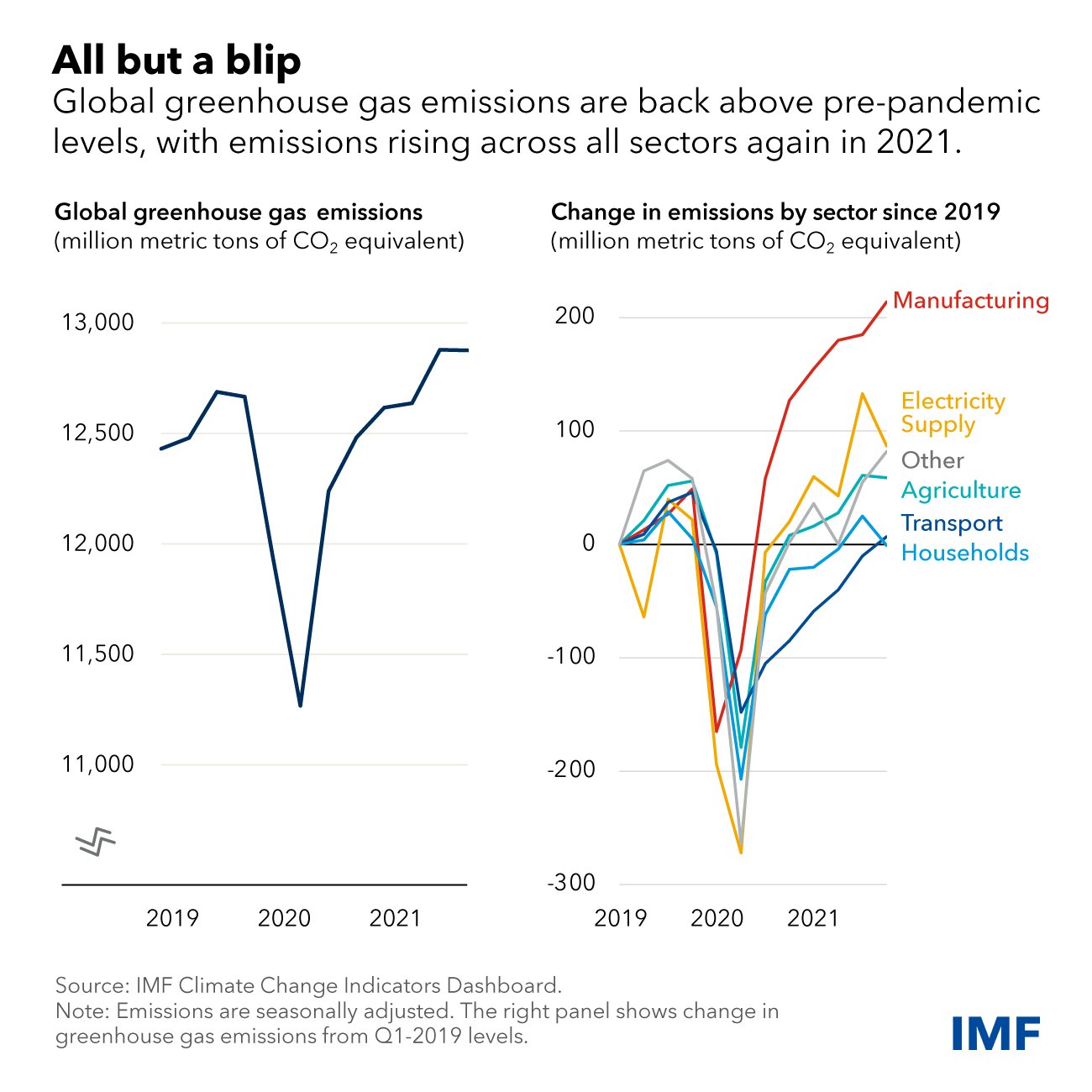Lockdown and its Environmental Impact
Lockdown and its environmental impact
5 January 2023
During global lockdowns in 2020, carbon dioxide levels fell by 2.4 billion tonnes and green house gas emissions decreased by 4.7% compared to 2019 levels, which is the highest single year drop since 1970 when data collection started. People and businesses reduced activities, meaning that car journeys decreased by half, and industrial emissions from manufacturing, metal and chemical production dropped by a third.
Some people had hoped that economic regrowth after the pandemic would rebound in a way that would support a continued decrease in emissions, but unfortunately, after restrictions loosened, global emissions rose higher than pre-pandemic levels.
Source: IMF Climate Change Indicators Dashboard (available here)
This graph from the IMF shows that despite global drops in CO2 levels during the pandemic, they are now higher than pre-pandemic levels. Manufacturing is currently the sector with the highest emissions, and households with the least.
Some countries however have been successful in continuing to reduce their emissions after the pandemic. This includes the EU countries as a whole, the USA, Japan, South Korea, Indonesia, Canada, South Africa, Mexico and Australia. But other countries have increased emissions since the pandemic, such as China, India, Russia, Iran, Saudi Arabia, Brazil and Turkey. The world’s highest emitters are China, USA, EU, India, Russia and Japan.
The 2022 emissions gap report states that the world is currently on track to reach 2.8 degrees rise by the end of the century, which will overstep the threshold for safe levels for global warming, which is 2 degrees maximum, ideally 1.5 degrees. The report states that global emissions must be cut by 45% in order to avoid catastrophic climate change.
How can businesses keep emissions low post-pandemic?
One step that businesses can make is to switch to renewable energy providers. All energy we use in the UK (apart from individual solar panels) comes from the national grid, which is a mix of renewables and non-renewables. However, by choosing a renewable energy provider, you are putting your money towards supporting sustainable infrastructure projects such as wind and solar farms, so that gradually more of the national grid will be run on renewable energy.
Secondly, make sure that your suppliers are as sustainable as possible. Your suppliers’ emissions will count towards your own business’s scope 3 emissions, so it is important to check them. Request one of our ESG formatted supplier questionnaires here.
If your business operates in person, then another important step is to reduce waste. This can be done through providing composting bins, recycling bins and electronic waste collection points. You can also change your printers’ default settings to eco-friendly modes and double-sided printing.
Another tip for in person businesses is to focus on sustainable transport. This was one of the major factors in emissions reductions over lockdowns since car journeys decreased by half. Many businesses have implemented cycle to work schemes, which can be a great way to not only reduce emissions, but also boost employee’s health. Another option, if cycling is not realistic, is to encourage car shares amongst employees. If your business requires longer journeys to different places that cannot be replaced with online meetings, consider arranging travel so that multiple places in the same region can be visited in one trip.
You may also want to check your company’s digital footprint. This can be done by making sure that your website is as low carbon as possible - check out our previous guest blog which explains how to make your website greener here. You can also request to find out your carbon footprint from your business’s cloud usage, which Microsoft offers here.

